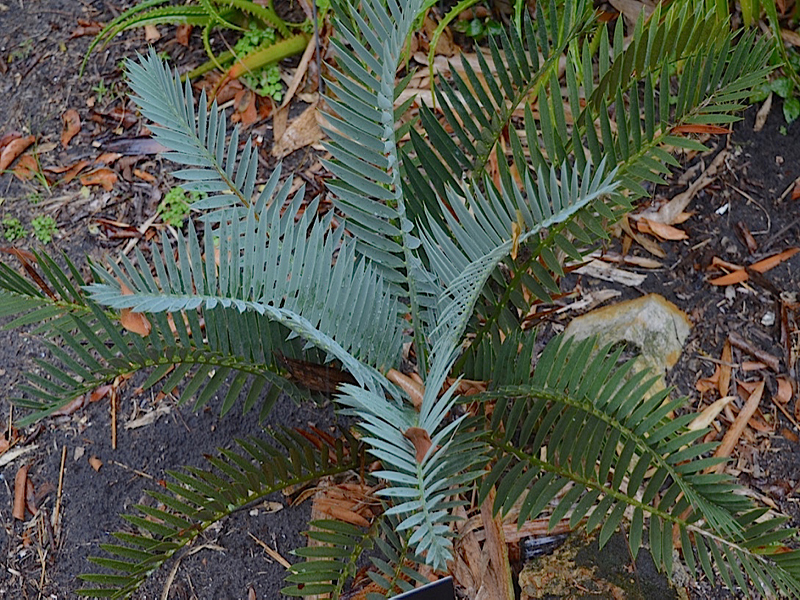| Propagation | From seed and by suckers. |
| Cultivation | It requires neutral to alkaline soil with very good drainage. If grown in shade and with too much moisture, the leaves will lose their metallic blue colour and will turn green, so plant it in a sunny position. |
| Notable Specimens | Harry P. Leu Gardens, Orlando, Florida, United States of America. |
| Habitat | It grows in the catchments of several rivers. Its habitat is semi-arid with an annual rainfall of around 250 - 350 mm. |
| Bark/Stem Description | An erect trunk up to 2 m tall and 40 cm across, forms clumps of up to 10 stems, with suckers produced from the base. |
| Leaf Description | Blue leaves which are 1-1.5 m long. The whorls of leaves become entangled as the plant becomes bushy and the crowns appear to lose individual identity. |
| Flower Description | Seeds ovoid or oblong, 3,0-4,5 cm long, 2,5-3,0 cm wide, red colour. |
| Fruit Description | Male and female plants produce a single cone per stem. Male cones are sub-cylindrical, 25-35 cm long, 8-10 cm in diameter, carried on a short stem, and they are bluish green, with a covering of blackish red, fine hairs. Female cones are barrel-shaped; they are similar in colour to male cones. |
